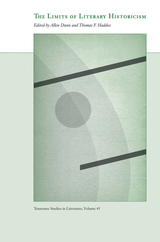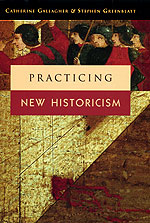
The Limits of Literary Historicism is a collection of essays arguing that historicism, which has come to dominate the professional study of literature in recent decades, has become ossified. By drawing attention to the limits of historicism—its blind spots, overreach, and reluctance to acknowledge its commitments—this provocative new book seeks a clearer understanding of what historicism can and cannot teach us about literary narrative.
Editors Allen Dunn and Thomas F. Haddox have gathered contributions from leading scholars that challenge the dominance of contemporary historicism. These pieces critique historicism as it is generally practiced, propose alternative historicist models that transcend mere formula, and suggest alternatives to historicism altogether. The volume begins with the editors’ extended introduction, “The Enigma of Critical Distance; or, Why Historicists Need Convictions,” and then is divided into three sections: “The Limits of Historicism,” “Engagements with History,” and “Alternatives to History.”
Defying convention, The Limits of Literary Historicism shakes up established modes to move beyond the claustrophobic analyses of contemporary historicism and to ask larger questions that envision more fulfilling and more responsible possibilities in the practice of literary scholarship.

In lucid and jargon-free prose, Catherine Gallagher and Stephen Greenblatt focus on five central aspects of new historicism: recurrent use of anecdotes, preoccupation with the nature of representations, fascination with the history of the body, sharp focus on neglected details, and skeptical analysis of ideology. Arguing that new historicism has always been more a passionately engaged practice of questioning and analysis than an abstract theory, Gallagher and Greenblatt demonstrate this practice in a series of characteristically dazzling readings of works ranging from paintings by Joos van Gent and Paolo Uccello to Hamlet and Great Expectations.
By juxtaposing analyses of Renaissance and nineteenth-century topics, the authors uncover a number of unexpected contrasts and connections between the two periods. Are aspects of the dispute over the Roman Catholic doctrine of the Eucharist detectable in British political economists' hostility to the potato? How does Pip's isolation in Great Expectations shed light on Hamlet's doubt?
Offering not only an insider's view of new historicism, but also a lively dialogue between a Renaissance scholar and a Victorianist, Practicing the New Historicism is an illuminating and unpredictable performance by two of America's most respected literary scholars.
"Gallagher and Greenblatt offer a brilliant introduction to new historicism. In their hands, difficult ideas become coherent and accessible."—Choice
"A tour de force of new literary criticism. . . . Gallagher and Greenblatt's virtuoso readings of paintings, potatoes (yes, spuds), religious ritual, and novels—all 'texts'—as well as essays on criticism and the significance of anecdotes, are likely to take their place as model examples of the qualities of the new critical school that they lead. . . . A zesty work for those already initiated into the incestuous world of contemporary literary criticism-and for those who might like to see what all the fuss is about."—Kirkus Reviews, starred review
READERS
Browse our collection.
PUBLISHERS
See BiblioVault's publisher services.
STUDENT SERVICES
Files for college accessibility offices.
UChicago Accessibility Resources
home | accessibility | search | about | contact us
BiblioVault ® 2001 - 2024
The University of Chicago Press









